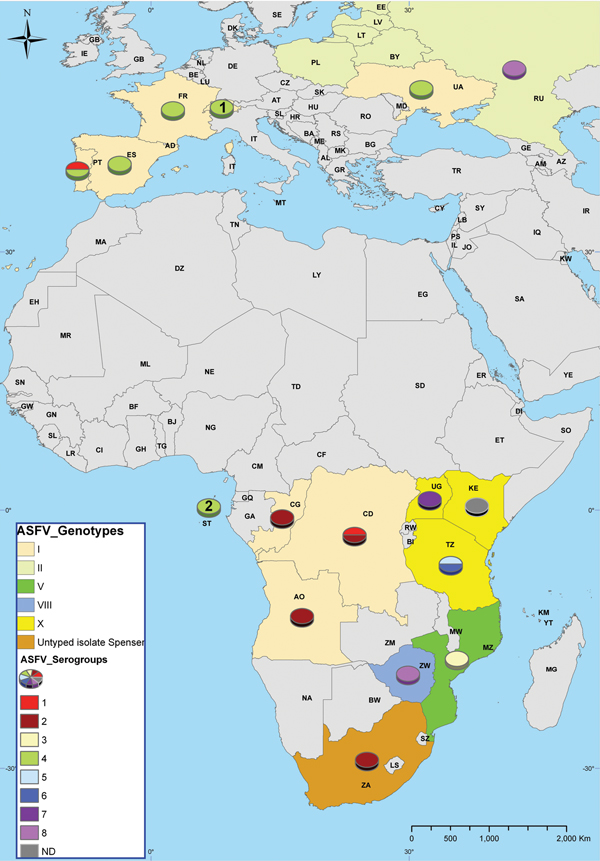Volume 21, Number 2—February 2015
Dispatch
Comparative Analysis of African Swine Fever Virus Genotypes and Serogroups
Figure 2

Figure 2. World distribution of African swine fever virus (ASFV) isolates maintained in a collection at the National Research Institute for Veterinary Virology and Microbiology in Рokrov, Russia. Results of p72 genotyping and hemadsorption inhibition assay of ASFV isolates are summarized on the map. Genotype II of ASFV isolates from Lithuania, Latvia, Estonia, Poland, and Belarus was identified by CISA-INIA (Animal Health Research Center; European Union Reference Laboratory for African Swine Fever). ASFV isolate O-77, which was isolated in 1977 from Odessa, Ukraine (at the time, part of the Union of Soviet Socialist Republics), was used in this study. On the basis of CISA-INIA results, currently circulating isolates in Ukraine belong to genotype II. ASFV isolate Brazil-80 (genotype I, serogroup 4) is not shown. The oval with a 1 inside indicates Switzerland; the oval with a 2 inside indicates São Tome and Principe. Country names are presented as 2-letter country codes as designated by the International Organization for Standardization country codes (ISO 3166, http://www.iso.org/iso/country_codes.htm).
1These authors contributed equally to this article.